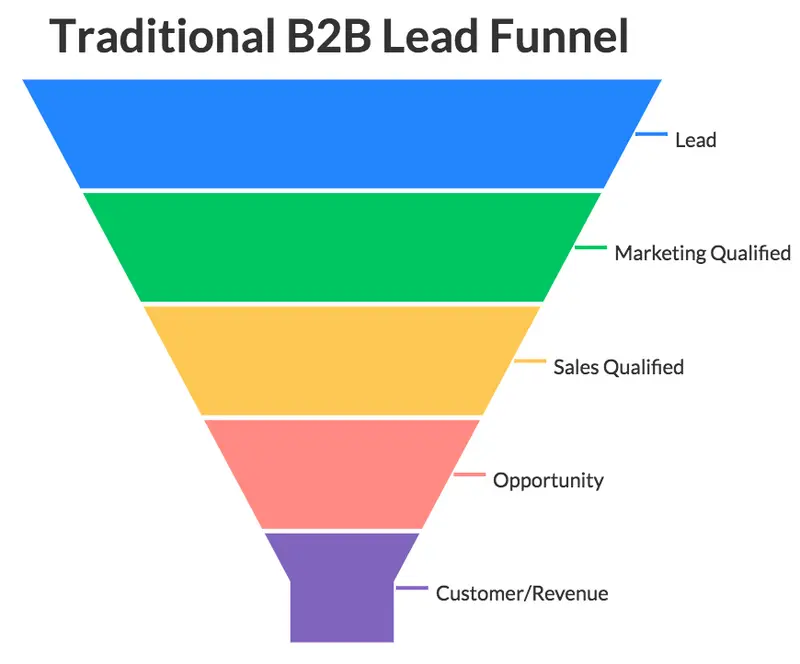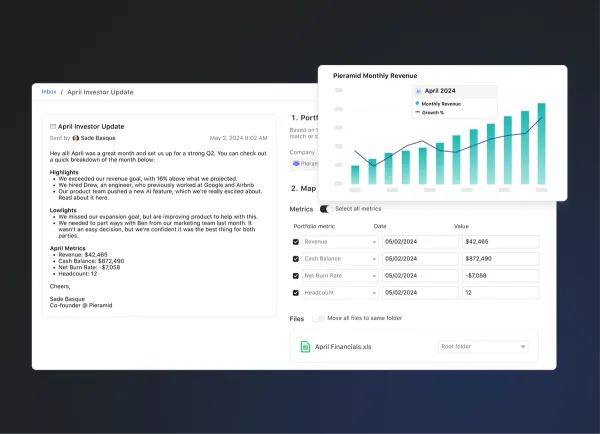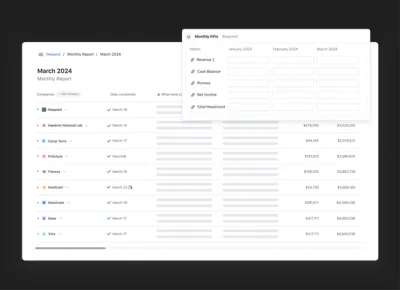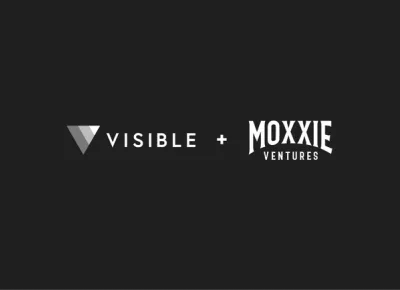
How SaaS Companies Can Best Leverage a Product-led Growth Strategy

The importance of executing on the product side of the business has long been a primary focus for countless successful founders and notable startup advisers. So it may come as little surprise that one of the fastest growing trends in SaaS is a renewed focus on product—this time as the primary engine for growth.
What is product-led growth?
Our friends at OpenView have been leading the charge in championing product-led growth as a go-to-market strategy. As defined in this helpful presentation, PLG occurs in “instances when product usage serves as the primary driver of user acquisition, expansion, and retention.” Growth becomes tied to the value of your company’s product.
Like most great startup trends, PLG has its massive success stories that have inspired its wider adoption. The rapid growth of Slack, Calendly and Dropbox have all been at least partially attributed to a product-led strategy to scale. In each case, a product has been offered that is easy-to-use, easy-to-share, and immediately valuable – so much so that it drives user acquisition at remarkable rates, slashes customer acquisition costs (CAC), and surges customer lifetime value (CLV). One of the most valuable upsides of a successful PLG strategy is the overwhelming strong unit economics that can accompany the user growth.
As OpenView often discusses, PLG often impacts every aspect of a SaaS business.
Product Led Growth Impact on Product
Considering PLG is based off of a company’s ability to distribute their product there is obviously a huge impact on the product. Everyone and every department in your business needs to have an intense focus on product. “It’s about product being the core DNA of your company,” Hiten Shah writes. “So much so that the default mode for solving problems—including growth challenges—is to figure out how to use the product to address whatever issue is at hand.”
So what exactly does this mean for your product? It needs to be simple and focused. You need to deeply understand your user pain points, strip out any unnecessary features, and have a product that delivers value in a quick and efficient manner. This is to enable other core tenants of product-led growth; freemium, self serve, product qualified leads, etc.
Product Led Growth Impact on Marketing
Product-led growth also has a major impact on your marketing efforts. In order to best leverage a PLG strategy, your product needs to act as its own marketing channel. The product needs to be inherently viral and allow for easy adaptation for other users.
The user experience should be the core of what a PLG marketing team does. The marketing team needs to be able to onboard new users, create a stellar experience, and use product data to improve marketing communication and nurturing later in the process. As the team at User Pilot writes, “Typically, this means that your product model includes a freemium or offers a free trial. This is a disruptive, bottom-up sales model…where employees of an organization can choose what products they want to use instead of being forced to use certain tools by IT or operations departments in a traditional top-down approach.”
Product Led Growth Impact on Sales
With an intense focus on product across a product led growth organization the way the sales team works and sells the product will also change. In the past, most software sales teams embraced a top down approach. A sales representative or account executive would find an executive (or executives) at an organization and do their best to sell a set number of seats for the organization. The traditional B2B sales funnel oftentimes looks like this:

With a product led growth strategy, sales teams almost act more like a customer success and inbound sales representative. For example, let’s assume a PLG company uses a free trial. The product and UI/UX need to be able to show the trialing user value as soon as possible. PLG sales goal here is to unlock and show the product’s value to the user on trial. Whereas a top-down approach would have required a sales member to tell a new user about the value now they are directly showing the value of the product.
As the team at ChartMogul put it, “The ultimate goal of PLG sales is to motivate your users to use your product, unleash the value as soon as possible, and convert your users to power-users.”
Product Led Growth Impact on Pricing
Product led growth has a drastic impact on the pricing of a product. PLG allows companies to land and expand their customer base. This often means a free or reduced price plan that scales with a company as they add usage, seats, etc. The 2 most common pricing strategies that have come out of PLG are freemium and free trials.
https://website-staging.visible.vc/wp-content/uploads/2019/05/mike-on-plg.mp4
Freemium Pricing
As Investopedia defines it, “Under a freemium model, a business gives away a service at no cost to the consumer as a way to establish the foundation for future transactions. By offering basic-level services for free, companies build relationships with customers, eventually offering them advanced services, add-ons, enhanced storage or usage limits, or an ad-free user experience for an extra cost.” The team at OpenView Labs goes on to explain a freemium model further by stating, “A freemium product, by contrast, gives users access to a limited set of features, functionalities, and use cases indefinitely and without charge. There is no time limit, but parts of the product remain off-limits to free users.”
This generally works best for a company that has a lower customer acquisition cost and a longer lifetime value (AKA a product led growth company). A freemium strategy opens up the top of funnel for a PLG company. This means that there may be more users coming into the product to give it a try but this generally means users are less likely to get activated (use the product) and may cause issues later in the sales and marketing funnel. Running parallel, and just as popular, is the free trial model.
Free Trial
Another common pricing and acquisition model is the free trial. As the team at OpenView Labs explains it, “Free trials typically allow users to experience a complete or nearly complete product for a limited time. This means granting free users access to all features, functionality, and use cases for the duration of their trial.”
This means that there may be more friction at the top of the funnel. A user inevitably knows that they will have to pay down the road and this may detract them from wanting to give your product a try. However, this means that when a user starts a free trial there is intent behind their decision and they are likely more qualified.
The main pro of a free trial method is the sense of urgency it creates. By having a “shot clock” on their trial time a user will inevitably have to make a decision to use the product.
Why is product led growth becoming so important?
OpenView Labs has coined product leg growth as “SaaS 2.0” and for very good reason. With recent failures of cash intensive/burning business there has been more focus than ever before on building a sustainable and profitable business. One of the most efficient ways to build a profitable business? You guessed it — product led growth.
In addition to the lean business becoming more attractive to venture capitalists and the public markets the ways people buy software is changing as well. In the past, software was traditionally a top-down purchase. A leader or executive at a company found a piece of software they liked, implemented it across their team or organization, and expected everyone to use it. Fast forward to today and more companies are embracing a bottoms-up approach.
As the team at Origin Ventures wrote, “As an influx of capital has increased competition amongst B2B SaaS companies, bottoms-up sales has become the low-cost, scalable method that provides a quick way for SaaS companies to engage users quickly. By selling directly to ground-floor product users (rather than executive teams), bottoms-up works best when the software is inexpensive or free to start, doesn’t need to be tailored to each customer, and has clear value propositions for small groups of employees.”
Benefits of a product led growth strategy
A product led growth strategy offers countless benefits.
Lower Acquisition Costs
One of the most attractive benefits of a PLG strategy is the decreased customer acquisition costs. While it is assuming that you’ll need to invest more in product development the cost of acquiring new customers will continue to lower. This is because the product should do the heavy lifting for your business.
By having a product that offers a free trial or freemium experience the top of your funnel will flourish and the product should enable users to upgrade and scale in turn lowering acquisition costs.
Upsells & Expansion
PLG enables your pricing and contract sizes to scale with your companies. While a set of users may be using a freemium version or are on a free trial, PLG should allow companies to slowly upgrade their plans. In turn this generates more upsell revenue and reduces the likelihood of churn as the price is created to scale and grow with a given customer and business.
Better User Experience
Ultimately a PLG strategy is a better experience for the end user. First off, in order to properly execute a PLG strategy the product needs to be best-in-class which is already a bonus for a user. On top of that the onboarding, resources, and UI/UX are built to be easy-to-understand and require minimal setup and intervention from a sales or customer success representative.
How to become a product led growth company
In order to become a product led growth company you need to have an extreme focus and buy in from everyone in the organization. While the benefits are clear there are a few things a SaaS company needs to do before they can fully embrace being a PLG company.
Customer Empathy
First order of business to become a product led growth company is to deeply understand your customer and the job they are trying to accomplish. A great product is best informed by deeply understanding your customers.
You also need to have empathy when it comes to how a customer buys your product. On one hand you may have customers that enjoy speaking to someone when making a decision. On the other hand you may have customers that want to be left along and make a buying decision on their own. Both customers in this instance are correct. It is a PLG companies duty to be able to empathize with and sell to both customer sets.
Great Product
It probably goes without saying that a PLG company needs a great product. If your product is clunky and requires a hands on setup it is probably not a great option for PLG. If it is intuitive and easy to get started a PLG strategy may sound like a better idea. It is the namesake of the strategy so having your product dialed in a 100% must.
Intuitive Onboarding
In part of having a great product is having great onboarding. If users are coming to your product via free trial or a freemium experience they need to be able to get setup and understand the product on their own. There is likely an overlap of the product doing the work, resources to help, and a customer success team to help accomplish this. It is imperative that the product is easy to get started. For a freemium experience, it will not scale well to have customer success or support team members helping users in the product. The goal is to allow users uncover the value on their own.
Company Culture & Team Focus
If you’ve built a great product, chances are your culture—knowingly or not—is centered around putting the product first. As Liz Cain of OpenView puts it, “You live to serve your customer, to make a product that delights and excites… You don’t want your company aligned around a boiler room, ‘always be closing’ sales culture.”
While product-led growth might not be for every business, there are learnings that can translate across all businesses.
Key product led growth metrics you must know
Product Qualified Leads
When a potential customer is already using a version of your product—whether that be a trial participant or user in a freemium model—they can qualify as a PQL. With a PQL, the customer has hit a designated trigger that lets the sales team know they are ready for a follow up call. As Christopher O’Donnell notes, by using the product to educate the customer first, you’ve given your sales team a huge advantage. “If we flip the traditional model 180 degrees and start instead with product adoption, we find ourselves selling the product to folks who understand the offering and are potentially already happy with it, before they even pay,” O’Donnell writes.
PQLs rely on the product selling itself. With this approach, you’re providing the best possible introduction to demonstrate how the product can be a long-term solution. That’s an easy process to replicate too. “[PQLs] are scalable because they require no human touch and they are high-quality leads,” Tomasz Tunguz writes. “When the sales team calls PQLs, customers typically convert at about 25 to 30%.”
If you have a freemium offering of your product, you can gain the benefits of the potential velocity of incoming leads while also earning the financial rewards of an inside sales price point.

Furthermore, a focus on PQLs can improve your product roadmap as well. Tunguz notes that PQLs actually serve as a management tool as well because the focus on customer action gets everyone onboard with revenue as the key performance indicator. are a “Typically, the product and engineering teams don’t have goals tied to revenue which bisects a team into revenue generating components (sales and marketing) and cost centers (eng and product).”
That can create a lack of effectiveness when it comes to creating a product that sells itself and providing the best ammo for a sales team to finish the job if needed. Of course, your product and engineering teams will have longer-term features that will not be revenue significant in the short-run. However, a mix of both can help get everyone on the same page and quickly end potential arguments. That’s a great addition to any company culture. “PQLs provide a rigorous framework for prioritizing development,” Tunguz writes. “Each feature can be benchmarked to determine the net impact to PQL which is ultimately funnel optimization.”
Churn
Churn is important in every SaaS business but especially important in a product led growth business. As we wrote in our SaaS Metrics Guide, there are 2 core types of churn that a PLG/SaaS business need to track:
“Customer churn rate: This simply refers to customers lost within specific time periods. Hopefully, you can also enhance these SaaS metrics with information about why the churn rate may have either spiked or declined under various circumstances.
Revenue churn rate: A SaaS business model may include various prices, based upon the number of unique accounts or levels of features or services. Hopefully, customers upgrade over time; however, if they’re not, SaaS companies should find out why.”
Keeping your churn low will not only allow for efficient growth but allow for a greater customer lifetime value so you can bump customer acquisition costs when needed.
Customer Lifetime Value
Another metric to keep tabs on when evaluating a PLG strategy is customer lifetime value. Simply put, customer lifetime value is the estimated amount that a customer will bring in over the course of their relationship with your business. As we wrote in our SaaS Metrics Guide:
“You can estimate the lifetime value of your customers by following these steps:
- Estimate your customer lifetime rate with this formula: 1/average churn rate. With an average churn rate of one percent, for example, your CLR would be 100.
- Divide monthly revenue by the number of customers to calculate your average revenue per account, or ARPA. For example, 100 customers and a monthly revenue of $100,000 would work out to an ARPA of $1,000.
- Finally, calculate the customer lifetime value, or CLV, by multiplying the ARPA by the CLR. In the example above, your CLV would be 1,000 X 100 = $100,000.
You can use the CLV to help you estimate the lifetime value of each customer. Companies can also use this handy metric to illustrate their value to investors.”
A PLG company should allow for a higher customer lifetime value as the model and pricing is built to scale with a business. For example, a company bringing in $0 in revenue should be paying $0 for their subscription. As they continue to grow their revenue so will their contract size. In theory this should decrease the likelihood of them churning and increase their likelihood of staying on board and increasing their contract/lifetime value.
Time to value
One of the key aspects to selling a PLG subscription is the amount of time it takes a new user to get to value. If you can measure and continue to improve your time to value, the likelihood of a new customer closing or an existing customer upgrading their plan will greatly increase. Users have essentially limitless options in today’s SaaS world and need to be able to quickly evaluate and make a decision on your product. If a long setup or manual work is required you’ll likely lose the attention of a new user and they will look elsewhere.
The team at OpenView labs shares how HubSpot uses TTV with their website grader:
“Trials are good to do, but trials are often too long. At HubSpot we had a tool called Website Grader… Its entire existence was about creating time to value. It’s free. You put in a URL – your site or your competitor’s – and we analyze the site using our marketing methodology.“
Upsells/Expansion
As we mentioned earlier the likelihood of a customer upselling or expanding their account is a major plus of product led growth. As we described in our Monthly Recurring Revenue Guide, “Expansion monthly recurring revenue is MRR from gained from existing customers when they upgrade their subscriptions”
Because users will have the option of a free trial or freemium plan the ability for them to quickly upgrade plans is very likely. While it may only be small jumps from plan-to-plan in you enable a customer to achieve their job, they will continue to upgrade plans as their team and business continues to scale.
Examples of businesses with a product led growth strategy
While there are countless businesses that run a product led growth strategy, the three below are some of our favorites.
Slack
Slack is one of our all time favorite examples of product led growth at Visible. Slack has had a freemium plan since day 1 and has become the poster child of freemium. Slack pricing is built to scale with usage and a user’s growth. WIth the Slack PLG strategy, new users get to use the full Slack product for free up until they hit 10,000 messages. This means that once you’ve hit the limit, you fully understand the value of Slack and probably can’t function as a business without it.

Tools like Slackbot and their suite of integrations make onboarding and getting setup on Slack easier than ever. The pricing as Slack is built to grow with a business as well. With per seat pricing of around $7/mo it is often times a no-brainer to add on more licenses when needed.
Dropbox
Another one of our favorite examples of a proper product leg growth strategy is from Dropbox. Dropbox fully supports the bottoms up approach and has mastered it on their march to over $1B in revenue.
The Dropbox product is remarkably easy to use. It has a very friendly and simple UI that makes usage an ease. Oftentimes it is considered the best tool for sharing files. On top of that it is inherently viral. There are shared files that make other people intrigued by Dropbox and may sign up for their own use. They also have a powerful referral program that gives free data to new users and the referring user.

Dropbox has truly nailed the bottoms up approach and have been a SaaS case study for companies looking to embrace a product led growth strategy.
What’s a good product-led growth strategy?
In his review of Blake Bartlett’s PLG talk at SaaStr 2017, Drew Beechler outlines the five traits of PLG success: virality, easy sign-up, quick to demonstrate value, slow to hit users with paywalls, and “a focus on making all customers successful across the sales-to-support continuum.”
A successful PLG strategy gets your product in the hands of your customers as fast as possible and starts solving their problems right away. “Growth in [PLG] companies has a significant viral component.” Jon Falker of GLIDR writes, “Users can get unique value from the product or service right away and can benefit from helping to attract other new users.” This is why freemium models are remarkably effective in a PLG environment. By providing the user with a valuable experience upfront, you can inspire more frequent use, greater shareability, and focus on the premium aspects of your product that will drive purchasing decisions and ultimately retain these customers.
Is product-led growth the right strategy for your company?
Your company’s unique financial, growth, and talent considerations will need to be assessed before you can determine the right investment to make into a PLG strategy. As the OpenView PLG Market Map shows, this strategy continues to be adopted across the globe and among an increasingly wide swath of product categories. Still in order to succeed at the five traits of strong PLG companies listed above, you actually have to be a business positioned to offer these benefits. If a freemium model isn’t on the table at the moment or if your product doesn’t currently offer clear network effects, a more gradual approach to achieving PLG success may be the right course of action. For instance, as Shah notes, a company might hire or retain sales talent to attract large customers early on while product-led growth continues to develop at scale. A focus on product can occur simultaneously in an organization that still needs to execute more traditional SaaS sales to achieve a healthy growth rate. On the marketing side, a gradual approach to PLG may include an increased focus on conversion rates on core landing pages to drive faster user acquisition across all customer types.
But even in a more incremental approach to PLG, you will refocus your entire team on what matters most. “Everyone in the company should be focused on growth. Everyone should be responsible for revenue,” Shah writes. “Exactly what this looks like will vary from company to company based on which teams have the most say on what ends up getting built and shipped.”
Successful PLG companies develop cross-functional teams, demonstrate effective information sharing within their organization, and attach greater significance to shared KPIs to accomplish to inspire a greater focus on growth and accountability to revenue.
To learn more about product led growth and best practices for growing and scaling your company, check out the Visible Weekly. Curated resources and insights delivered every Thursday.



